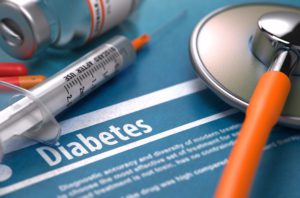26 Jul
Article attributable to Al Sears MD ( www.alsearsmd.com )
What is Type II Diabetes Mellitis?
Type II Diabetes, also known as diabetes mellitus is a problem with your body that causes blood glucose (sugar) levels to rise higher than normal. This is also called hyperglycemia. Type 2 diabetes is the most common form of diabetes. If you have type 2 diabetes your body does not use insulin properly. This is called insulin resistance. At first, your pancreas makes extra insulin to make up for it. But, over time it is not able to keep up and cannot make enough insulin to keep your blood glucose at normal levels. Complications from diabetes has had a terrible impact on the quality of life for millions and is the 4th or 5th (depending on what you read) cause of death among Americans. Globally, diabetes has become pandemic in industrialized countries.
So what are we doing about this disease? Well, like too many diseases we have taken a reactive approach to diabetes and rely on medicine to try to control the effects of diabetes. Since 2004, the FDA has approved more than 30 major diabetes drugs. However, the effectiveness of these drugs has been considered dubious without evidence that any of these drugs have saved a single life or prevented complications from diabetes such as heart attacks (80% of deaths related to diabetes), blindness or amputations. 1 As reported by Dr. Al Sears, MD, a recent study involving a comparison of diabetic drugs to placebos found there was absolutely no increase in survival rates for people who took the drugs. The drugs completely failed to prevent heart attacks or strokes. They also failed to reduce all-cause mortality for these patients.2 Diabetes drugs have numerous side effects such as cardiovascular reactions, flu-like symptoms, dizziness, muscle pain, stomach pain, diarrhea and anemia. About 100,000 people every year end up in the emergency room with dangerously low blood sugar from taking these drugs.
To complicate matters, many diabetics are not just taking one, but are taking two and even three of these drugs at the same time. Instead of saving lives, it is opined that this multiple-drug plan increases death rates. A study in The New England Journal of Medicine supports that opinion. They found intense efforts to lower blood sugar with drugs resulted in a 22% higher rate of death from any cause. Deaths from heart disease increased by 35%.3
The Best Cure is Prevention
Of course, the best cure for Diabetes is preventing this harmful and potentially lethal disease. The following diabetes prevention steps are recommended:
- Exercise / Physical Activity/ Weight ReductionBeing sedentary and overweight are the two prime risk factors associated with developing type II diabetes. If you have someone in your immediate family with diabetes, you should be very concerned. Your risk of developing diabetes is significantly increased by genetic links to this disease in your family. However, remember, genetics is the gun, your lifestyle is the trigger. You can prevent getting diabetes even if it exists in your family by proper exercise and weight control. Both aerobic and strengthening exercises help metabolize blood sugars and increase levels of homocystiene, a hormone that improves your cells sensitivity to properly metabolizing sugar.
- Vanadium SupplementsVanadium is a crucial trace mineral that helps move glucose from the blood into the cells where it can be used as energy. In this respect Vanadium mimics the action of insulin. It also inhibits the absorption of glucose from the gut. That helps reduce damaging blood sugar and insulin spikes. In one study, people with diabetes took vanadium supplements daily. After just three weeks, average blood sugar levels dropped by 10%.4Recommended dosage by Dr. Al Sears: 500 mcg 3x daily. (Do not exceed 10 mg in a day.)
- Guava
Guava is a fruit that controls blood sugar and diabetes. The fruit blocks the digestion of carbs and results in fewer sugar spikes. Thus, this fruit reduces your need for insulin. You should be able to find fresh guava in local markets. Also consider drinking guava tea.
- Berberine
Berberine is a plant blood sugar herb that lowers blood glucose levels. It is found in medicinal herbs like barberry and goldenseal. Berberine works by decreasing insulin resistance and increasing your body’s ability to break down sugars inside cells. This decreases sugar production in the liver.Recommended dosage by Dr. Al Sears: 500 mg capsule of Berberine 2-3x per day with food.
- Exposure to Sunshine:
Low vitamin D3 levels are directly linked to insulin resistance, pre-diabetes and full-blown type 2 diabetes. In fact, one study revealed that even a minor D3 deficiency can increase your risk of diabetes by 91%.5 That is significant due to the fact that most people have a vitamin D deficiency.You can derive sufficient levels of vitamin D3 from at least 10 minutes of exposure to direct sunshine per day. It’s crucial that you expose parts of your body that are usually covered up. That’s the only way your body can produce enough vitamin D. You can also get vitamin D from foods like salmon, mackerel, tuna, sardines eggs and grass-fed beef, liver and dairy. You can also take D3 supplements, at least 1,000 mg per day.
________________________________________
- John Fauber, Elbert Chu and Coulter Jones, “Benefits of Diabetes Drugs Dubious.” Milwaukee Journal Sentinel, December 21, 2014
- Palmer SC, Mavridis D, Nicolucci A, et al. “Comparison of Clinical Outcomes and Adverse Events Associated With Glucose-Lowering Drugs in Patients With Type 2 Diabetes: A Meta-analysis.” JAMA. 2016;316(3):313-324.
- The Action to Control Cardiovascular Risk in Diabetes Study Group. “Effects of Intensive Glucose Lowering in Type 2 Diabetes.” N Engl J Med 2008; 358:2545-2559.
- Wallach, Joel D. and Lan, Ma. “Rare Earths: Forbidden Cures.” Bonita, CA: Double Happiness Publishing, 1994, pp 411-12.
- Huang Y, Li X, Wang M, et al. “Lipoprotein lipase links vitamin D, insulin resistance, and type 2 diabetes: a cross-sectional epidemiological study.” Cardiovasc Diabetol. 2013;12:17.


![]()